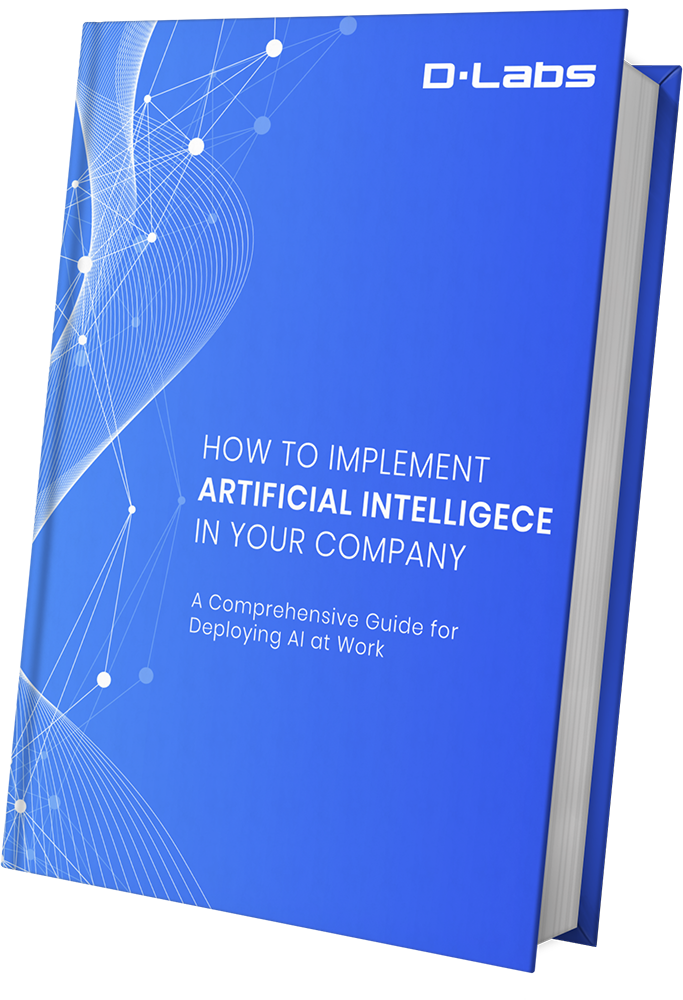Artificial intelligence can transform any organization. That’s why 37% of companies already use AI, with nine in ten big businesses investing in AI technology.
Still, not everyone can appreciate the benefits of AI. Why is that? One of the major hurdles to AI adoption is that people struggle to understand how AI models work. They can see the recommendations but can’t see why they make sense.
This is the challenge that explainable AI solves. Explainable artificial intelligence shows how a model arrives at a conclusion.
And in this article, we’ll show you why that’s revolutionary. Ready?
Let’s begin.
What is explainable AI?
Explainable artificial intelligence (or XAI, for short) is a process that helps people understand an AI model’s output.
The explanations show how an AI model works, the expected impact, and any potential human biases. Doing so builds trust in the model’s accuracy and fairness. And the transparency encourages AI-powered decision-making.
So if you’re planning on putting an AI model into production in your business, consider making it explainable. Because with all the advances in AI, we humans find it increasingly difficult to see how our algorithms draw their conclusions.
Explainable AI not only resolves this for us. It helps AI developers check that their systems are working as intended.
Why do we need explainable AI for business?
Artificial intelligence is somewhat of a black box. What we mean by that is you can’t see what’s happening under the hood.
You feed data in, get a result — and you’re meant to trust that everything worked as expected. Whereas, in reality, people struggle to trust the opaque process. That’s why we need explainable AI, both in business and many other domains.
Explainable AI helps everyday users understand AI models. And that’s crucial if we want more people to use and trust AI.
What can you do with explainable artificial intelligence?
Explainability answers stakeholder questions about why AI suggests a course of action. That’s why you can use explainable AI in pretty much any context, with healthcare and finance being two strong examples.
Explainable AI In Helathcare
Let’s look at healthcare first.
When dealing with a person’s health, you need to feel confident you’re making the right decision. Equally, practitioners want to be able to explain why they suggest treatment or surgery to their patients.
Without explainability, this could be impossible. But with explainable AI, healthcare professionals can be clear and transparent across the decision-making process.
Explainable AI In Finance
In domains such as finance, there are strict regulations.
As a result, companies must be able to explain how their systems work in order to meet regulatory requirements. At the same time, analysts often have to take high-risk, potentially costly decisions.
Blindly following an algorithm over a cliff isn’t a wise move. That is — unless you can audit why the algorithm suggested you take that step in the first place.
These are just two examples. But you can deploy explainable AI anywhere you want transparency in the decision-making process.
Explainable AI: Two Popular Techniques
There are several techniques to help us explain AI. But at a high level, explainable AI falls into two categories: global interpretations and local interpretations.
- Global Interpretations
A global interpretation explains a model from a top-line perspective. Let’s suppose you’re looking to predict house prices in a given zip code. You could use a neural network to derive predictions.
But how will the end-user know the basis of a suggested price? A global interpretation might say something like, “The model used square feet to predict the value.”
- Local Interpretations
A local interpretation drills down on the details. Let’s say a house with a small square footage came out as super expensive.
The result might raise an eyebrow, but if you look at the local interpretation, the explanation might tell you, “The model predicted a higher valuation because the house sits very close to the city center.”
Three benefits of explainable AI
Explainable artificial intelligence offers benefits to developers and end-users. Here are the three biggest benefits of embracing it.
Check your AI model works as expected
From a developer’s side, it can be hard to know if a model produces accurate results. The most effective way to check is to build in a level of explainability.
Doing so allows humans to analyze how an algorithm drew its concussions. We can then spot if shortcomings are undermining the model’s recommendations. A real-life example of this comes from a healthcare system built in the United States.
The model supposedly helped care workers determine if a patient should receive additional support based on a ‘commercial risk score.’ But a problem came to light when they gained access to more data.
They saw the algorithm wasn’t working as expected. It assigned lower-income patients a ‘lower commercial risk’ than they should have received, and the healthcare providers realized a human bias was present in the AI.
This was ultimately resolved.
Build stakeholder trust in your AI recommendations
Organizations use artificial intelligence to help with decision-making. But there’s no way AI can help if stakeholders don’t trust the recommendations.
After all — you wouldn’t take advice from someone you don’t trust, much less likely a machine you can’t understand. In contrast, if you show a stakeholder why a recommendation makes sense, they’re much more likely to agree.
Explainable AI is the most effective way to do this.
Meet regulatory requirements
Every industry has regulations to follow. Some are more stringent than others, but nearly all have an audit process, especially concerning sensitive data.
Take the EU’s GDPR and the UK’s Data Protection Bill, which both grant users the ‘right to explanation’ as to how an algorithm uses their data. Suppose you run a small business that uses AI for marketing purposes.
If a customer wanted to understand your AI models, would you be able to show them? If you used explainable artificial intelligence, doing so would be simple.
Case study: Explainable AI in EdTech
As we mentioned earlier, explainable AI can benefit all manner of industries. Case in point: our team recently applied explainable AI to a project for a global EdTech platform.
We used the SHAP package to build an explainable recommendation engine that matches students with university courses they might like. And the explainability continues to help us tweak how the system works.
If a recommendation seems questionable, the student support team can check why the model suggested the course. Then, they can decide to share the information with the student — or flag an issue to our development team.
Building explainable AI for business
Explainable artificial intelligence promises to revolutionize how organizations worldwide perceive AI.
In place of distrusting black-box solutions, stakeholders will be able to see precisely why a computer model has suggested a course of action. In turn, they’ll feel confident following a model’s recommendation.
On top of this, developers will be able to constantly optimize algorithms based on real-time feedback, spotting faults or human bias in logic and correcting course. Thanks to all this, we expect more and more businesses to adopt AI over the next twelve months.
If you’d like to learn how explainable AI can help your business, why not start by reading our case study featuring EdTech platform TC Global.






